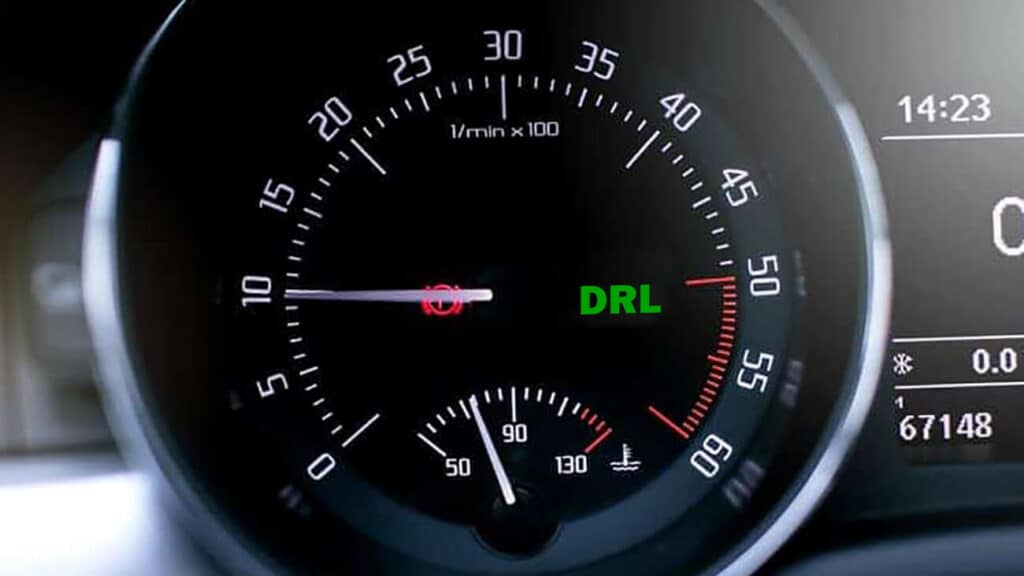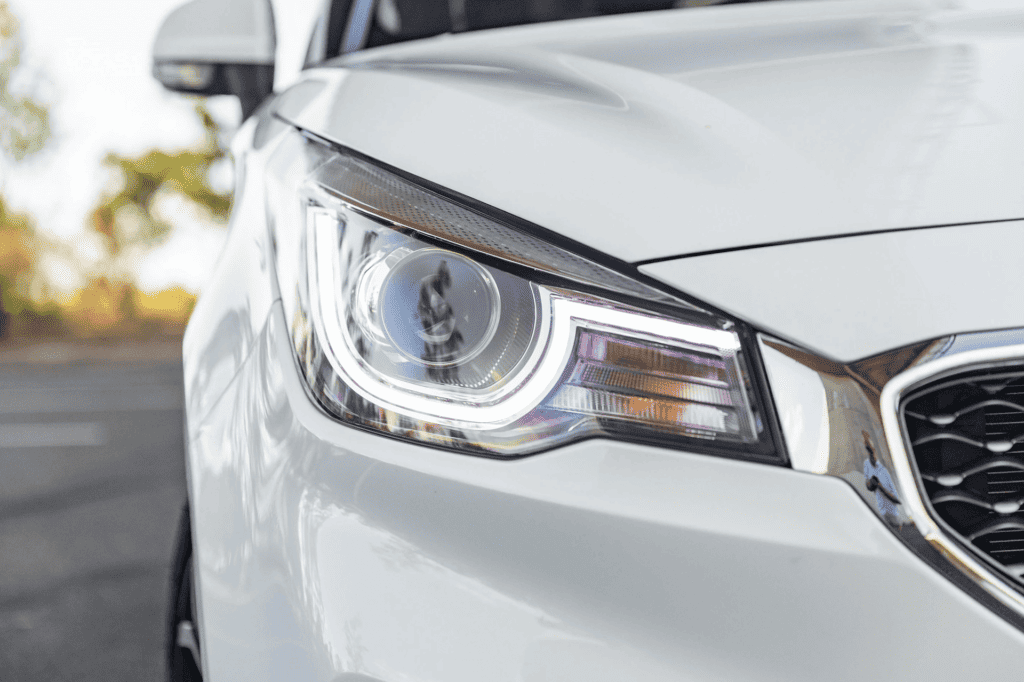Bright Beginnings – The Importance of Daytime Running Lights
Ever notice the subtle glow of headlights on a bright, sunny day? Those are Daytime Running Lights (DRLs), an essential player in the automotive safety lineup. While they may not pierce through darkness like their nocturnal counterparts, DRLs are the vigilant sentinels of daylight driving, offering a beacon of safety that’s easy to overlook but hard to underestimate. This guide will illuminate everything from their purpose to their practicality, ensuring you’re well-versed in the luminous world of DRLs.
Understanding Daytime Running Lights: A Safety Feature Explained
Daytime Running Lights (DRLs) stand as vigilant sentinels on the front of modern vehicles, their illumination a herald of safety on the road. These are not your granddad’s high beams; they are subtler, designed specifically to slice through the ambience of daylight without the blinding fanfare of traditional headlights. Activated automatically when the engine springs to life, DRLs bathe the path ahead in a glow that’s perceptible even under the sun’s scrutiny. The genius of DRLs lies in their moderate brightness, which manages to capture the attention of fellow drivers and pedestrians without casting an aggressive glare. This calculated visibility is not merely for show—it’s an active participant in road safety. Research underscores their effectiveness: the presence of DRLs has been linked to a downturn in daytime traffic incidents. They are not just lights; they are watchful guardians in our perpetual quest for safer roads.
As we move beyond the traditional headlight, DRLs stand out as an evolutionary step in automotive safety design. They cut through the static of our daily commutes, making each vehicle an active beacon of its own presence. It’s a concept that’s simple yet profound: a vehicle that announces itself with light significantly reduces its chances of becoming an unseen hazard. It’s a dialogue of beams and eyes, with DRLs ensuring that every vehicle has a voice in the visual cacophony of daily traffic. This safety feature is a testament to the power of innovation—a small change in lighting that carries a significant impact on our collective well-being on the streets and highways.

Navigating the Laws: The Evolution of DRL Requirements in Canada
The journey of Daytime Running Lights (DRLs) through the legislative corridors of Canada is a story of proactive change. It was in the twilight of the 1980s when policymakers, with an eye on the burgeoning evidence supporting the efficacy of DRLs, began to weave these lights into the fabric of vehicle safety regulations. By 1990, the presence of DRLs on Canadian roads became more than a manufacturers’ choice; it was a mandate—a new stitch in the country’s automotive safety net. The enactment of these requirements was not arbitrary; it was a decision illuminated by statistics that showcased a dip in daylight accidents where DRLs were in use.
Canada’s approach to DRL regulation created a tapestry of safety that stretched across its vast landscapes. Every vehicle, from the nimble hatchback to the stoic SUV, was to be equipped with these heralds of visibility. It was a standardization effort that promised consistency—a unified front in the battle against road accidents. The specifics of these laws were clear-cut: DRLs must engage when the vehicle’s engine was running, and the car in motion, casting a preemptive glow that foretold its trajectory. Through snow, rain, and the clearest days, these regulations have stood as a constant, ensuring that every vehicle speaks the same visual language of safety.
The Pros and Cons: Evaluating the Effectiveness of DRLs
The safety benefits of DRLs are clear:
Pros
• Increased Visibility and Safety: DRLs are designed to make vehicles more noticeable during daylight, potentially reducing the risk of daytime accidents. Their presence has been correlated with a decline in multi-vehicle crashes in various studies, enhancing overall traffic safety.
• Compliance with Safety Regulations: Utilizing DRLs ensures adherence to safety regulations in countries where such lights are mandated, like Canada, thereby avoiding legal penalties.
• Automatic Operation: Most modern vehicles are equipped with DRL systems that automatically engage, offering hassle-free compliance without driver intervention.
Cons
• Energy Consumption: Traditional DRLs can draw a considerable amount of power, leading to concerns about fuel efficiency and unnecessary energy drain.
• Potential Glare: Improperly aligned or overly bright DRLs can cause glare to oncoming drivers, which may lead to discomfort or momentary vision impairment.
Neutral
• Technological Advancements: LED technology has significantly reduced the energy consumption of DRLs, making them more efficient and less of a drain on the vehicle’s electrical system.
• Design and Positioning Standards: Vehicle manufacturers are continuously improving the design and placement of DRLs to minimize glare and integrate them aesthetically into vehicle design.
To Operate or Not: Managing Your DRLs and Understanding the Override
The operation of Daytime Running Lights (DRLs) is typically characterized by the lack of driver involvement. The ingenuity of their design means that they are self-regulating, illuminating without so much as a flick of a switch from the driver. This automation is a nod to convenience and consistent safety practice. But the narrative of DRLs is not one of rigidity; it appreciates context. There are moments when the script calls for subtlety—situations like driving onto a film set or through corridors of nature where wildlife is sensitive to light. In these instances, the DRL override switch emerges as a thoughtful feature, allowing drivers the discretion to dim their vehicle’s daytime footprint momentarily.
This switch is not about undermining the safety that DRLs provide; it’s about giving drivers flexibility. With a simple action, the DRLs can be quieted, allowing for a seamless blend into environments where minimal distraction is paramount. Yet, this is not a permanent change. The override is temporary, a pause rather than a stop, ensuring that once the vehicle resumes its journey through the regular throngs of traffic, the DRLs return to their duty. The override feature is a subtle acknowledgment that while safety is universal, its application can be situational, and the control remains, as it should, firmly in the hands of the driver.
When DRLs Don’t Play By The Rules: Troubleshooting Persistent Lights
But what if your DRLs seem to have a mind of their own, staying on when you’ve turned everything off? This can be symptomatic of a range of issues. It’s not uncommon for drivers to face this peculiar scenario:
Symptoms
• DRLs Stay On After Vehicle Shutdown: A common issue where DRLs remain illuminated could indicate a malfunction in the light’s relay system or a fault in the vehicle’s light sensor.
• Flickering or Dimming DRLs: Inconsistent DRL performance may be due to a failing light module, poor electrical connections, or an expiring bulb.
Check
• Fuse and Relay Health: Regular inspection of fuses and relays associated with the DRL system can preemptively address electrical failures.
• Electrical System Diagnosis: A comprehensive check of the vehicle’s electrical system by a professional can unearth hidden issues causing DRL malfunctions.
Solution
• Professional Repair or Replacement: Persistent DRL issues often necessitate a visit to a mechanic or an automotive electrician for expert repair or replacement of faulty components.
Preventive Action
• Regular Vehicle Check-ups: Scheduled maintenance can catch and resolve DRL issues before they escalate, ensuring the lights function correctly.

Maintenance and Longevity: Keeping Your Daytime Running Lights in Top Form
DRLs, like all components of your vehicle, have a life expectancy. With the dawn of LED technology, the lifespan of these lights has extended significantly, often outliving the vehicle itself. However, if they do require attention, it’s not just about longevity but also about maintaining optimal luminosity and safety. Costs for servicing can range, but regular checks can prevent the burnout of more than just your bulbs.
• LED vs. Traditional Bulbs: LED DRLs boast a considerably longer life expectancy than traditional halogen bulbs, often lasting for tens of thousands of hours.
• Regular Inspections: Periodic inspections can ensure that DRLs are operating at the correct intensity and are free from damage or degradation.
• Dimming or Color Change: A noticeable decrease in brightness or a change in light color can indicate that DRLs are nearing the end of their service life.
• Budgeting for Replacement: While LED bulbs are more expensive upfront, their extended lifespan can lead to cost savings over time compared to halogen DRLs.
• Opt for Quality Replacements: Investing in high-quality LED replacements can improve longevity and performance, reducing the frequency of servicing.
• User-Replaceable Units: Some DRL units are designed for easy replacement by the vehicle owner, potentially saving on labor costs.
• Ensuring Optimal Performance: For complex systems, professional installation and alignment can guarantee that DRLs operate efficiently and effectively.
Daytime Running Lights – Keeping the Path Ahead Bright and Safe
Daytime Running Lights have become as integral to road safety as seatbelts and airbags. They’re a shining example of preventive safety measures that have made Canadian roads safer. Ensuring these lights are functioning correctly is not just about compliance; it’s about commitment to safety—yours and everyone else’s on the road. If you find yourself puzzled by DRL issues or it’s time for a service to keep them shining bright, consider reaching out to Uchanics. As Canada’s trusted mobile mechanic service, we bring expertise right to your driveway, keeping your path ahead bright and safe, every day.
